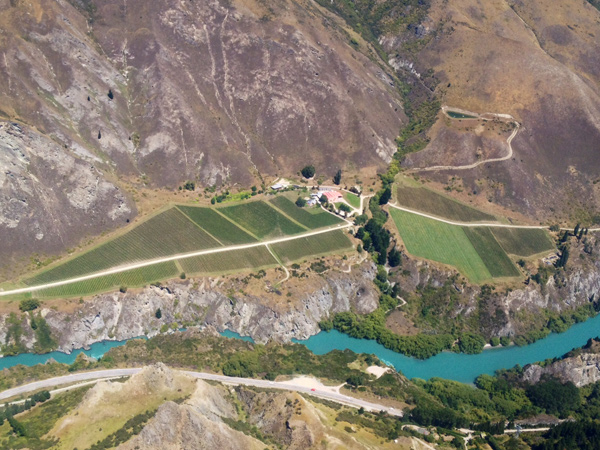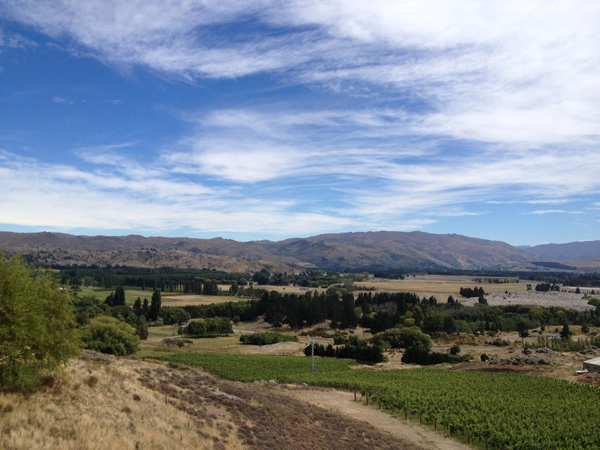 New Zealand’s winegrowing community is known for many things the world over, perhaps most famously now their ability to consistently produce sought after, high-quality pinot noir. But increasingly, it is for their ability to bring determination and ambition into play and to courageously put themselves on the line in order to learn and improve that is earning them the respect of their peers, the wine trade and wine consumers.
New Zealand’s winegrowing community is known for many things the world over, perhaps most famously now their ability to consistently produce sought after, high-quality pinot noir. But increasingly, it is for their ability to bring determination and ambition into play and to courageously put themselves on the line in order to learn and improve that is earning them the respect of their peers, the wine trade and wine consumers.
It has also caught the attention of the world’s most respected maker of great pinot noir and a recent visit to New Zealand by Domaine de la Romanée-Conti’s co-régisseur, Aubert de Villaine, highlighted the extent of the prestige and interest that New Zealand pinot noir has garnered in very important parts of the wine world.
Among his official engagements Mr. de Villaine, one of the most deep-thinking, experienced and respected scholars of pinot noir, took time out to participate in the 10th annual Central Otago Pinot Noir Celebration where I caught up with him and shared in some of his insights.
His reflections ran back to his home of Burgundy, his observations on the wines of New Zealand, the challenges of winegrowers and their ambitions. His every word was deeply insightful and his advice to growers and followers of great pinot noir invaluable.
How do you explain the fast-growing global interest in Burgundy and, more widely, pinot noir?
“The quality of pinot noir production has been rising and at the same time consumers have become more and more interested in nature, diversity and a product of nature and, of course, a product that says something about its origin. Burgundy, because of these factors, has become a region that is very sought after. It is interesting to notice that New Zealand is on a latitude that is very similar to Burgundy but in the southern hemisphere. It is a climate that is not entirely different and that seed of Burgundy has taken in New Zealand, it is a very interesting proposition.”
Wine quality and consistency both seem to be on an upward trajectory in Burgundy today, how do you describe the current state of play?
“It took around 100 years for a region like Burgundy to come out from the traumatism caused by phylloxera. In the 1970s and 1980s the effect of phylloxera was erased and we started to be ready again to make wine of the same calibre as the wines made before phylloxera. The most important thing is the consciousness that was born in the minds of the people that a certain number of rules have to be followed if you want to make great wines, especially the yield and the quality of the material.
At the same time came the arrival of a whole generation of young vignerons that remained in the Domaines because it was possible to make a living again on the properties. Before they would have left, but they remained, and these talented young people are very important in the success of Burgundy today.”
New Zealand’s reputation for pinot noir has grown rapidly, how do you see this from a Burgundian perspective?
“Burgundy was built over 2000 years and this idea of terroir was built over the centuries, kept alive, fine-tuned and is more alive than ever today. New Zealand is a very young country, the wine industry is very young, but with this idea of making wines of terroir which took in the minds of many vignerons here in New Zealand, things will go much quicker than they did in Burgundy. We are sharing our knowledge and know-how and it is something that will have a future in New Zealand.”
 Were you surprised by the quality of the pinot noir tasted during your visit?
Were you surprised by the quality of the pinot noir tasted during your visit?
“My impression of New Zealand pinot noir after my visit, especially after the grand tasting with all the wineries, is that there are today a lot of good wines, certainly more than a few years ago. Great progress has been made, but my general impression is that besides these good wines, there are only a few great wines. A great wine is a wine that expresses minerality, not only fruit or aromas, even very fine, but a real depth which, with pinot noir, can only come from terroir.”
Do you think New Zealand has the potential to make many more great pinot noir wines in the future?
“There was this writing by a French writer that said there is no pre-destined great wine, there is only a stubbornness of civilization and for New Zealanders it is a question of being stubborn. They have this idea of making Vin Terroir and they will succeed, but it’s a question of being stubborn.”
Spending time in Central Otago at the celebration and getting to know the growers there, what are your impressions of the people behind the wines? What is remarkable in Central Otago is, and has always been, the ambition of the growers. This time I have been impressed by the patience they show in the pursuit of their ambition. They have understood in the bottom of their heart all the importance of building a history, of a more complete understanding of their terroirs, of the importance of the old vines…the growers should continue to work individually towards this goal and keep this great solidarity and this enjoyment to work together. As I said in 2009 (in comments presented to the Central Otago Pinot Noir Celebration) it is now time for them to give shape to what will become tradition, but it is still too early to actually start to envisage a classification.”
Greater tannin structure also seems to be a common desire among New Zealand’s pinot noir makers. Do you have any wisdom or observations here? Yes, I have heard several times from growers that they would like, besides the fruit, more structure in their wines with more noble tannins. This structure is for me very close to what I call minerality and it can only be given by the adequation of vines, soil and micro-climate. To obtain a great tannic structure with soft, elegant tannins, it is necessary to have a real terroir planted with fine types of pinot noir of at least 20 years old giving a yield in adequation with the vintage and grapes picked at the right maturity.
In other words, you have to ask does this parcel have the potential to be a climat? If it is planted with a fine type pinot noir, with balanced natural yields, it can make a great wine. If not, it may have good fruit and power, but not the finesse that is required for a grand vin.”
Your advice towards a future of great New Zealand pinot noir?
“In Burgundy we are an example of diversity in unity. It is something built over the centuries and it is an example not only for the wine world, but for the world in general. It is the beginning of a journey in New Zealand by comparison, but it is the strength of the idea. If you take Burgundy, there is no place where people are more individualistic, where they disagree with their neighbours sometimes, they are very individualistic, but they are very eager at the same time to keep this unity because the idea is stronger than anybody. When I speak of freedom, it is up to the people to decide what are the criteria they are going to use to decide their boundaries. It is also about time, at least several generations.”
Aubert de Villaine visited New Zealand and the Central Otago Pinot Noir Celebration in his role as representative of the Les Climats du Vignoble de Bourgogne application to UNESCO for World Heritage listing.
Nick Stock is a renowned Australian wine writer, author, presenter and filmmaker who reports on his worldwide wine tasting experiences for JamesSuckling.com.
